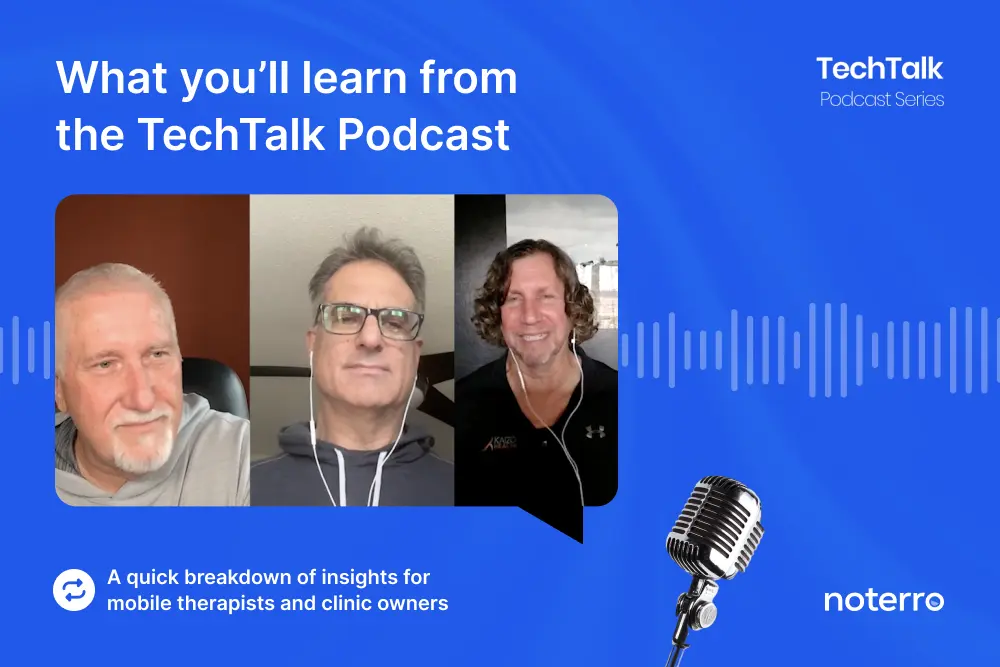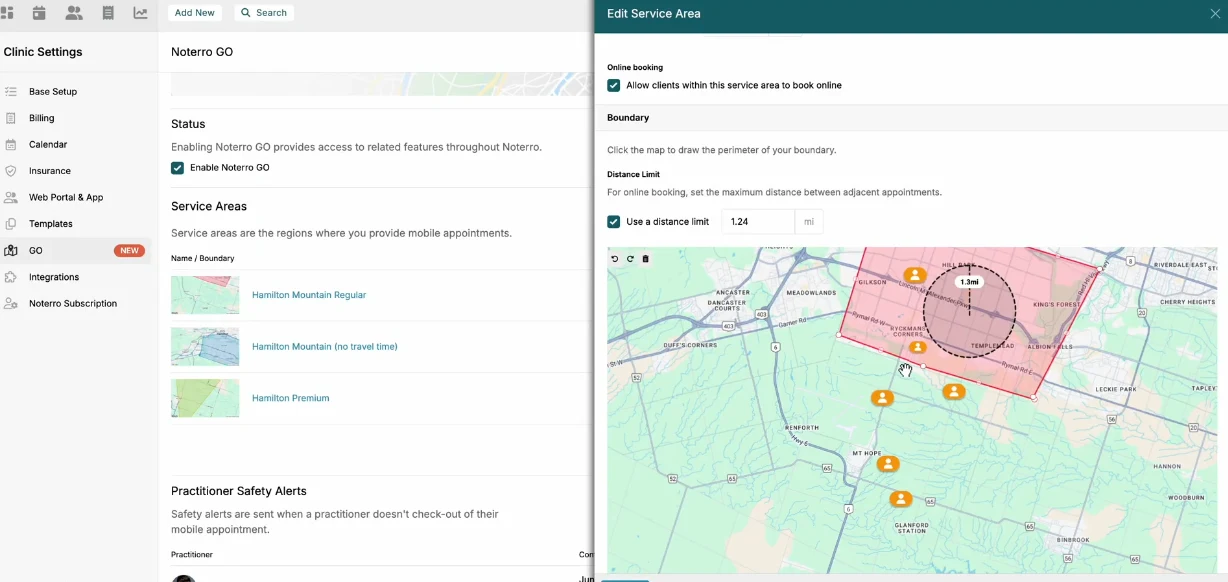End-of-Year Sale: Subscribe by December 31 to Get 3 Months Free!
Learn More
Table of Contents

Experience Better Practice Management Today!
Starting at $28.05/month
No Credit Card Required

Experience Better Practice Management Today!
Starting at $30/month
No Credit Card Required
A while back, I had the chance to join Brad Cost and Dr. Jay Greenstein on their Tech Talk podcast. It was a jam-packed episode, where we got to dig into how mobile healthcare is evolving, why it’s still underserved, and how we’re building Noterro GO to meet the real needs of providers in the field.
If you’re a chiropractor, physiotherapist, massage therapist, or osteopath who sees patients at their homes or workplaces, this one's for you.
When I first started talking to mobile practitioners (people running their practices from the road), it became clear how overlooked they were by traditional software.
As I told Brad and Jay:
“They use a practice management software like Noterro…and find workarounds when working as a mobile practice…And probably one of the biggest challenges is that they're going from one part of the city to another part of the city, and they have no way to fence that city in…”
These providers waste time zig-zagging across towns and cities because the tools they use weren’t built for the realities of mobile work. And that's not just frustrating, it’s costly.
We, at Noterro, realized early on that if we wanted to support mobile providers, we needed to rethink how bookings, service areas, and scheduling worked.
With Noterro GO, providers can draw virtual boundaries around the areas they want to serve. If a patient is outside that area, they won’t be able to book.
“Say you’re a brand new patient,” I explained on the show. “You have to put your address in before you can do anything, to determine even if I service your area. We don’t expose the service area, so it’s not something they can game.”
It’s a huge time-saver and keeps your calendar from getting clogged with impossible-to-reach appointments.

It sounds simple, but it solves a real operational headache. And it’s just one of many ways we’ve optimized the platform specifically for mobile care.
AI is everywhere right now. But as I told the guys on Tech Talk:
“You’re gonna start noticing, they’re just injecting AI for the sake of injecting AI. It’s not a proper use of the tool.”
At Noterro, we’ve been very deliberate in how we implement it, like:
Take patient intake, for an elaborate example. Instead of forcing you to read a long form before every appointment, we summarize that form into natural language with the Form Summary feature. You can listen to the summary on your way to the appointment, hands-free.
“As you’re driving,” I shared, “you can listen to what that summary form basically is—how they fill it out… If someone said, ‘I’ve all of a sudden just had rapid weight loss,’ it’ll probably flag that.”
Dr. Jay jumped in here:
“That must deliver a remarkable experience for the patient because the provider is just well-equipped and prepared to have those conversations.”
And that’s the point. Better-informed providers mean better conversations AND better care.
It’s not about bells and whistles. We want to save time, reduce mental load, and improve clinical outcomes for practitioners.
Brad brought up an important point about structured data and outcomes tracking. Back in the early 2010s, we actually built parts of Noterro to be extremely structured. But we hit a wall.
“The problem with structured and controlled data… people just wanted more control over the forms,” I said. “And by doing that, you lose some of the structure.”
Still, we haven’t abandoned the structure entirely. We control what goes into SOAP notes and orthopedic assessments, and even with our AI scribe tool, we maintain format while giving providers flexibility.
In the final part of the episode, we explored where AI is heading for healthcare as a whole, not just for Noterro.
I believe the biggest opportunity is decision support. Imagine AI looking at how you and thousands of other providers treat patients with similar profiles and suggesting better pathways.
“It’s gonna be able to look at the different ways you’re treating and say, based on how they present themselves… you might wanna try this approach.”
Jay added:
“We gotta help the patients make better decisions… based on opinions, interventions, science, lifestyle, age, history.”
And I agree. The goal isn’t to replace clinical judgment but enhance it with context, data, and insight that would otherwise take years to compile manually.
Brad also pointed out how this could work across 100 million+ interactions to surface the best treatment plans for specific patient profiles.
The last thing I said on the podcast pretty much sums up what we’re building toward:
“We don’t want you bogged down… it doesn’t matter who you are, what type of practitioner you want to be doing the things that you want to be doing. That’s treating patients.”
And that’s what Noterro is here for. To get out of your way, keep your workflow tight, and help you deliver great care—whether you're in a clinic or in your car.
Thanks again to Brad and Jay for having me. If you want to listen to the full episode, check out Tech Talk. And if you’re curious about how Noterro can help your mobile practice, check out Noterro GO and sign up for a 14-day free trial.
Tags



